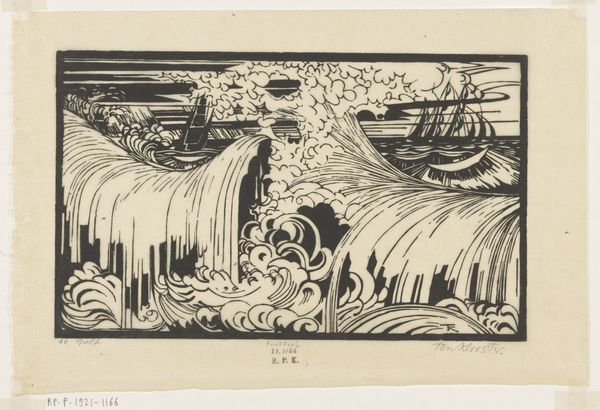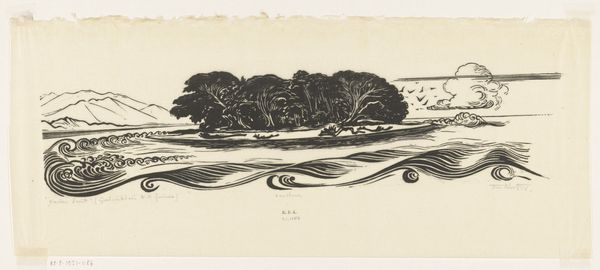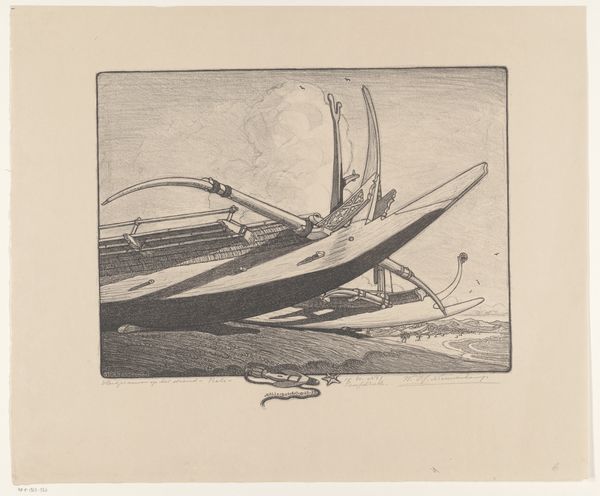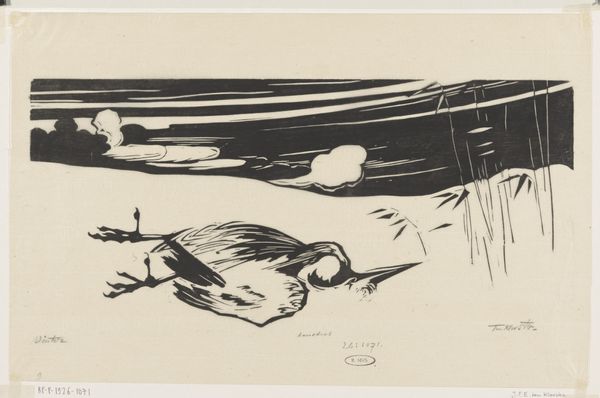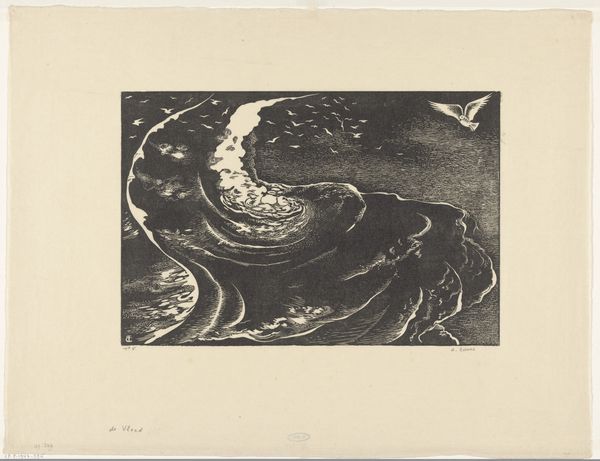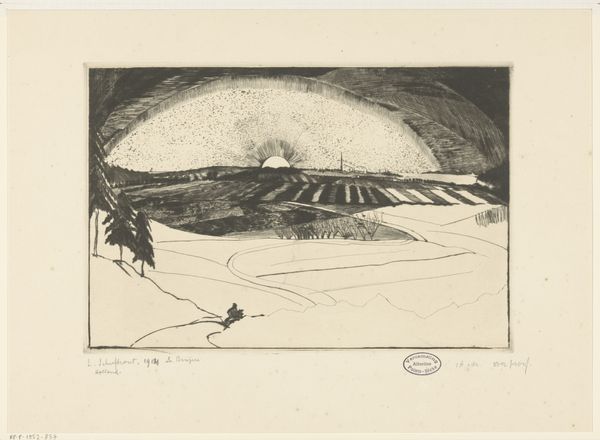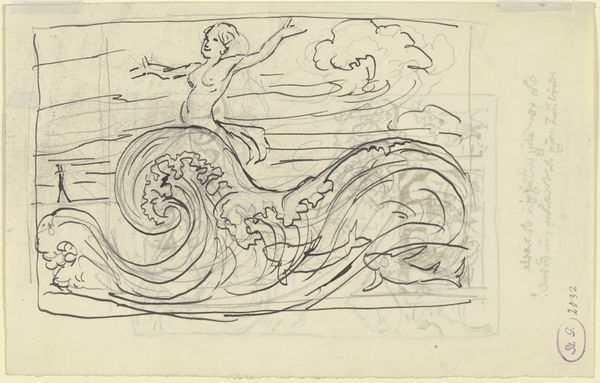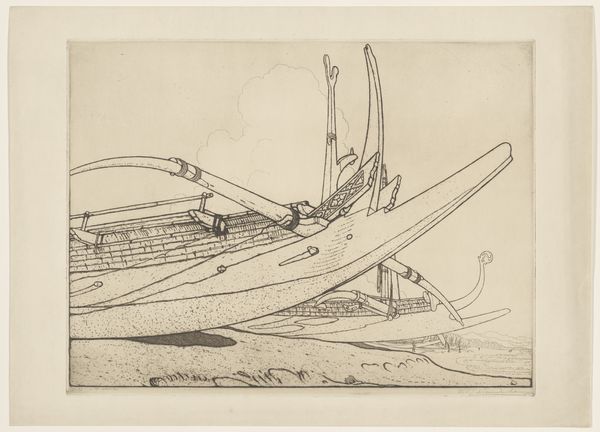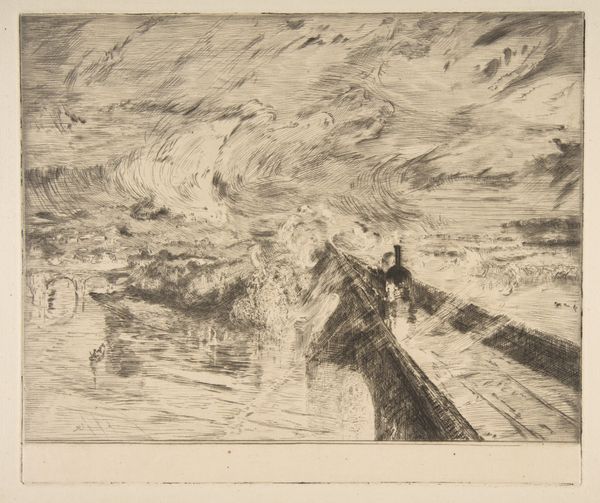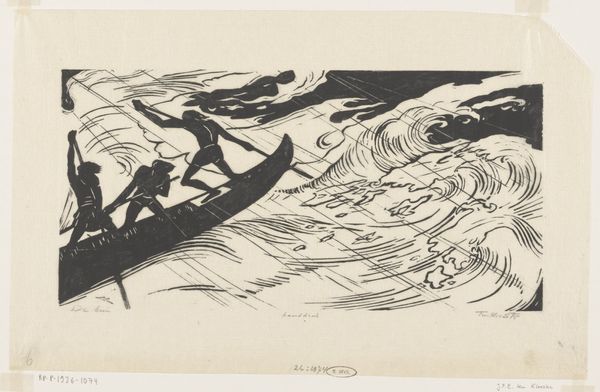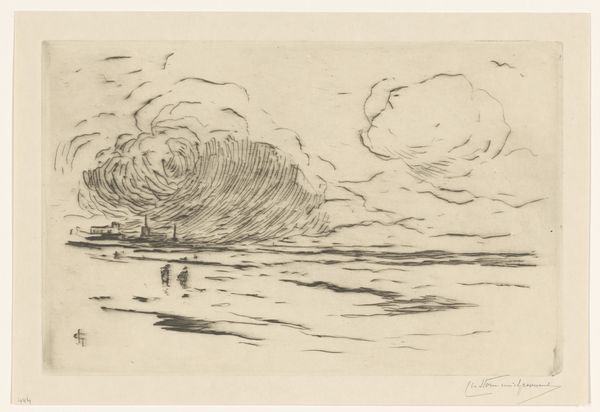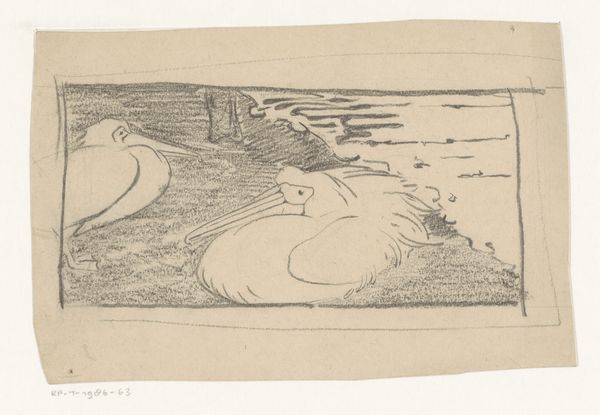
drawing, print, etching
#
drawing
# print
#
pen illustration
#
etching
#
landscape
#
pen-ink sketch
#
line
#
symbolism
#
sketchbook drawing
#
modernism
Dimensions: height 249 mm, width 553 mm
Copyright: Rijks Museum: Open Domain
Curator: Here we have Willem Bernardus IJzerdraat’s "Storm," dating roughly from 1850 to 1907. It's an etching, with pen and ink, rendering a very dramatic scene. Editor: Immediately, it's the swirling lines that grab you, isn't it? It's so expressive; almost a bit unhinged. It feels like the world is about to be swallowed whole. I almost hear wind. Curator: Indeed. What’s interesting here is the modernist lens applied to a very traditional subject matter. We have this idyllic Dutch landscape with a windmill, rendered in a thoroughly modern, almost abstracted way, using very deliberate linework. Editor: Yes, the contrast between the serene subject and the almost violent depiction is striking. Those stark, almost brutal lines create this incredibly tense atmosphere. Do you think he was feeling something turbulent in his own life? Curator: Perhaps. We see an almost total flattening of perspective, which forces us to reconsider our relationship to these natural and built forms. It almost challenges the conventional hierarchy between "fine art" and illustrative drawing given its similarities to printmaking and the associated labor that entails. Editor: It makes you wonder about the context. Was this piece part of a larger portfolio? Were these stormy seas symbolic for him? The mind reels with possibilities! The bleak monochrome adds to the drama. It simplifies, intensifies. I also detect what might be symbolism; I keep feeling these might be deeper themes he's illustrating beyond just a tempest. Curator: Exactly. One can see a movement toward symbolism within the use of black and white as representing conflicting powers, like humanity versus the all-powerful nature. Editor: This really gets you thinking, doesn't it? Even a simple landscape can carry so much weight, especially when channeled through someone like IJzerdraat. It is almost dizzying in its intensity. Curator: Precisely, and through examining its process, this is an excellent piece through which to study the late-19th-century transitions within artistic media and social conditions. Editor: Yes, and after having shared some moments with it, I walk away with the taste of that salt air. The artist really made that storm live in my imagination.
Comments
No comments
Be the first to comment and join the conversation on the ultimate creative platform.

